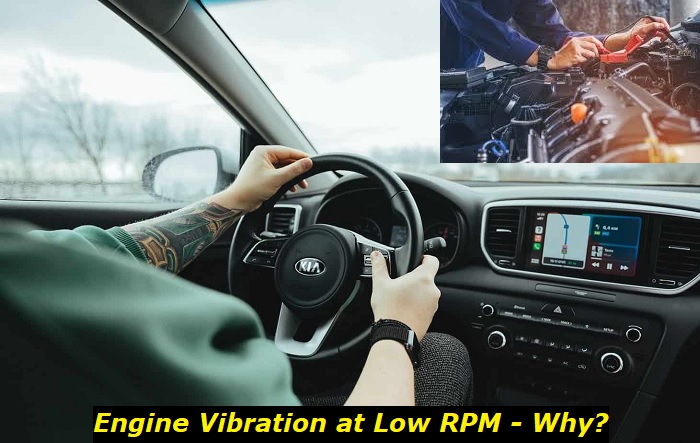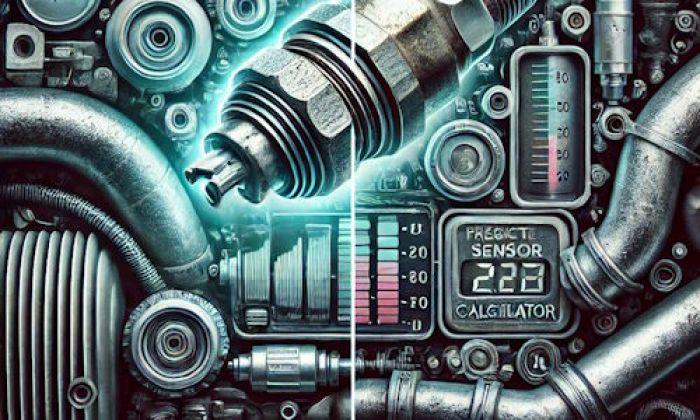Have you ever noticed your engine shaking whenever you drive at low speeds or even when you're idling? Experiencing bad engine vibration at low RPM certainly brings about a sense of worry and frustration. A smooth and stable ride is a key aspect of any driving experience, but engine vibrations can quickly spoil the fun.
Engine vibrations highlights
- Level of importance:Low
- Commonreasons:Misfiring, engine damage, transmission problems, drive shafts problems
- DIY inspection:Extremely complicated
- DIY repair:Impossible
- Price for repair:$500 - $1,000
- Can you drive?In most cases, yes
- Ways to fix:Only professional repair ispossible,in most cases

In this article, we'll explore the reasons why your car may be experiencing engine vibration at low RPM, and what you can do to fix it.
How Much Vibration is Normal in a Car?
Understand that all cars have moving parts, including the crankshaft, transmission gears, and other components within the engine. These parts are designed to rotate and move in specific ways, and as a result, it's normal for a car to have some level of vibration.
You'll often feel this vibration through the steering wheel, seats, and floorboard, and it can feel like a gentle buzz or hum.
However, if the vibration is more intense and feels like shaking, it's a sign that there may be an issue. In some cases, intense vibrations may be due to a loose part, such as a heat shield or exhaust pipe, that's vibrating against the vehicle.
Another factor to consider is the speed of the vehicle. At higher speeds, the vibration may become less noticeable, but if it increases when the vehicle slows down or stops, it may indicate an issue with the brakes or suspension system.
Also, pay attention to where the vibration is coming from. If you're feeling it primarily in the steering wheel or floorboard, this may indicate a problem with the front suspension or tires. If the vibration is felt mostly in the seat, there might be a problem with the rear suspension or tires.
Causes of Engine Vibration at Low RPM
Engine vibration at low RPM can range from a minor annoyance to a major problem, depending on the cause. Understanding the reasons behind engine vibration at low RPM can help you diagnose and fix the problem before it leads to more serious damage.
- Worn Engine Mounts
Engine mounts play a crucial role in reducing engine vibration by securing the engine in place. Over time, these mounts can become worn or damaged, leading to increased engine movement and vibration.
- Engine Misfire
An engine misfire can also cause significant vibration at low RPM. A misfire occurs when the engine fails to ignite the fuel mixture properly, leading to an uneven and inefficient combustion process. This disruption of the engine's normal operation can result in shockwaves that cause noticeable vibration.
- Faulty Spark Plugs
Spark plugs ignite the fuel mixture in the engine. If the spark plugs are dirty, worn, or damaged, they can cause a misfire and result in engine vibration.
- Poor Fuel Pressure
Fuel pressure is critical to the proper operation of the engine. If the fuel pressure is low, the engine may not receive enough fuel to run smoothly, leading to vibration. A mechanic can check the fuel pressure and determine if it is low.
- Dirty Fuel Injectors
Fuel injectors deliver fuel into the engine. If the injectors become clogged with dirt and debris, they may not supply the proper amount of fuel to the engine, leading to misfire and vibration.
- Idle Air Control Valve (IACV)
The IACV regulates the amount of air that enters the engine at idle. If the IACV is not working properly, it can cause a fluctuation in engine RPM, resulting in engine vibration. In some cases, a dirty IACV can cause the valve to stick, leading to an unstable idle and engine vibration.
- Vacuum Leak
A vacuum leak occurs when air enters the engine through a damaged or worn vacuum hose. This can cause the engine to run lean, resulting in engine misfires and vibration. A vacuum leak can also cause other problems, such as decreased fuel efficiency and increased emissions.
- Broken Timing Belt
The timing belt is a critical component in the engine that controls the opening and closing of the engine's valves. If the timing belt breaks, the valves can collide with the pistons, causing significant damage to the engine. A broken timing belt can also cause the engine to stall or vibrate at low RPMs.
- Worn Motor Mounts
Motor mounts support the engine and reduce vibration. If the motor mounts are worn, they can allow the engine to move excessively, causing vibration. Worn motor mounts can also cause damage to other engine components, such as the transmission and exhaust system.
- Worn Oxygen Sensor
The oxygen sensor monitors the air-fuel mixture in the engine. A worn oxygen sensor can cause the engine to run rich or lean, resulting in decreased fuel efficiency, increased emissions, and bad engine vibration at low RPMs.
How to Fix Bad Engine Vibration at Low RPM
Understanding the underlying cause of the problem is the first step to effectively fix a rough or shaky idle. Next, attempt practical ways to resolve the issue.
Here are some helpful fixes:
- Regularly clean your tires and wheel wells so they are free of debris and mud that accumulate on your tires and wheel, causing imbalanced weight distribution.
- Have your engine mounts inspected by a professional mechanic and replaced if necessary. Faulty mounts make the engine move excessively, causing vibration.
- If the timing belt is stretched, worn, or broken, have it inspected and replaced by a professional mechanic to resolve the issue.
- Since a vacuum leak is a common cause of bad engine vibration at low RPM, have a professional mechanic check and fix the vacuum system, if it's faulty.
- Clean the IAC Valve if it is clogged or faulty
- Install new spark plugs. This is a simple and inexpensive solution to bad engine vibration at low RPM.
- Inspect your hoses and replace or reattach any that are damaged or loose.
- Clean your car's fuel intake system and filter to improve engine performance and reduce vibration.
- It is recommended to replace the air filter every 15,000 to 30,000 miles, depending on your driving conditions, to maintain optimal engine performance.
- Let the engine run for a few minutes in extremely low temperatures so the engine oil circulates and reaches its operating temperature, reducing the likelihood of engine vibration.
- Have your brakes inspected by a professional mechanic to determine if they are the source of the vibration.
- Have your wheels checked by a professional to ensure they're balanced. The mechanic can perform a wheel balance and realignment to resolve the issue.
Is My Car Vibrating at Low RPM a Serious Problem?
As you now know, a car vibrates at low RPM from issues like worn or damaged spark plugs, loose or damaged hoses, a dirty fuel system, a dirty air filter, unbalanced wheels, and worn brake components.
In some cases, a vibration at low RPM can also be caused by a misaligned engine or transmission, worn motor mounts, or a problem with the idle air control valve.
The seriousness of the vibration problem depends on the underlying cause. If the problem is caused by worn spark plugs or a dirty air filter, it can typically be resolved with a simple repair or replacement.
On the other hand, if the problem is a misaligned engine or transmission, worn motor mounts, or a problem with the idle air control valve, it can be more serious and require more extensive repairs.
In some cases, a vibration at low RPM can also be a sign of a more serious engine problem. For example, a worn timing belt or a vacuum leak can cause significant damage to the engine if not addressed in a timely manner.
The best way to determine the seriousness of a vibration problem is to have the car inspected by a professional mechanic. They can diagnose the problem and provide a repair recommendation.
Conclusion
While low RPM is when vibrations are more noticeable, they can still occur at higher RPM. However, the higher frequency of the vibrations at higher RPM may make them less noticeable to the driver. It's important to identify the root cause of the vibration and address it promptly to avoid further damage to your vehicle.
Finally, keep in mind that the vibration can also be a result of a noise that is not a vibration you can feel. This could be caused by part of the exhaust system hitting against a heat shield. By getting to the root cause of the problem and repairing it, you can restore the smooth and comfortable ride of your vehicle.
About the authors
The CarAraC research team is composed of seasoned auto mechanics and automotive industry professionals, including individuals with advanced degrees and certifications in their field. Our team members boast prestigious credentials, reflecting their extensive knowledge and skills. These qualifications include: IMI: Institute of the Motor Industry, ASE-Certified Master Automobile Technicians; Coventry University, Graduate of MA in Automotive Journalism; Politecnico di Torino, Italy, MS Automotive Engineering; Ss. Cyril and Methodius University in Skopje, Mechanical University in Skopje; TOC Automotive College; DHA Suffa University, Department of Mechanical Engineering






Add comment